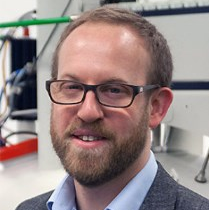Supramolecular Gels
A special issue of Gels (ISSN 2310-2861).
Deadline for manuscript submissions: closed (31 October 2018) | Viewed by 34147
Special Issue Editors
Interests: polymer synthesis; supramolecular materials; biomaterials; stimuli-responsive materials; drug delivery; tissue engineering; sustainability
Special Issues, Collections and Topics in MDPI journals
Interests: biomaterials; peptides; self-assembly; molecular engineering; bioengineering; nanomaterials; bioinspired materials; nanomedicine
Special Issues, Collections and Topics in MDPI journals
Special Issue Information
Dear Colleagues,
Nature employs a combination of supramolecular interactions (e.g., electrostatic, hydrophobic, π-π, cation/anion-π, van der Waals forces, hydrogen-bonding, and metal coordination) to generate hierarchically-ordered structures with remarkable stimuli-responsive properties. The same structure-directing forces can, in principle, be employed for the realization of man-made assemblies with similar or perhaps even greater utility. We warmly welcome submissions related to the preparation, characterization and applications of supramolecular gels, as well as gelation mechanisms. Special focus will be given to any emerging application of these fascinating materials. Fields such as biomedicine, catalysis, energy, coatings, cosmetics, health care, etc., should be great beneficiaries of this Special Issue.
Dr. John G. Hardy
Dr. Mustafa O. Guler
Guest Editors
Manuscript Submission Information
Manuscripts should be submitted online at www.mdpi.com by registering and logging in to this website. Once you are registered, click here to go to the submission form. Manuscripts can be submitted until the deadline. All submissions that pass pre-check are peer-reviewed. Accepted papers will be published continuously in the journal (as soon as accepted) and will be listed together on the special issue website. Research articles, review articles as well as short communications are invited. For planned papers, a title and short abstract (about 100 words) can be sent to the Editorial Office for announcement on this website.
Submitted manuscripts should not have been published previously, nor be under consideration for publication elsewhere (except conference proceedings papers). All manuscripts are thoroughly refereed through a single-blind peer-review process. A guide for authors and other relevant information for submission of manuscripts is available on the Instructions for Authors page. Gels is an international peer-reviewed open access monthly journal published by MDPI.
Please visit the Instructions for Authors page before submitting a manuscript. The Article Processing Charge (APC) for publication in this open access journal is 2600 CHF (Swiss Francs). Submitted papers should be well formatted and use good English. Authors may use MDPI's English editing service prior to publication or during author revisions.
Keywords
- supramolecular interactions
- self-assembly
- supramolecular polymers
- supracolloidal chemistry
- drug delivery
- tissue engineering
- regenerative medicine
Related Special Issue
- Supramolecular Gels: New Knowledge in Gels (3 articles)







